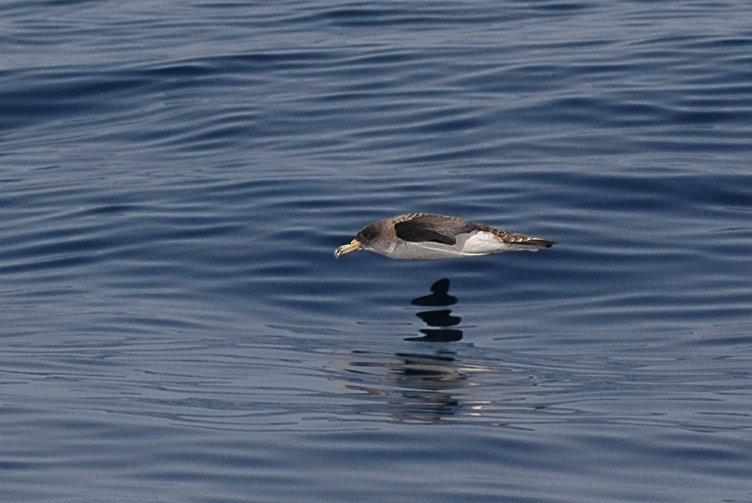“Shear” Experience

In recent weeks, birders have been spotting small numbers of Cory’s shearwaters off the southern Maine coast, including at least as far east as Muscongus Bay, just to the east of Pemaquid. Shearwaters are seabirds that superficially look a bit like gulls. But unlike most species of gulls they spend their entire lives at sea except for the short nesting period, when they lay their single egg usually in an underground burrow on an island.
And when we say “at sea,” we mean generally pretty far at sea. Trips to see numbers of shearwaters off of most parts of the New England coast require going out 20 or more miles from shore.
Shearwaters typically fly in a distinctive pattern, gliding low over the water, rising abruptly and then tilting back down toward the surface, all the while never flapping the wings. From a distance, a shearwater may appear to rise up in flight and then disappear behind the waves, the pattern repeated over and over as the bird moves rapidly across the sea while expending little energy. In this way, shearwaters can cover vast distances across the globe.
In fact, two species of shearwater that are often quite abundant in Maine’s offshore waters in summer are actually birds that nest on Sub-Antarctic islands during our winter (when it summer there). These species, the Great shearwater and the sooty shearwater, travel the entire length of the globe to spend summers on our coast before crossing the Atlantic and heading south again to meet the globe’s other summer.
Cory’s shearwaters are a bit different, as they nest on the Azores and Madeira Islands and some other islands off Portugal and northern Africa—still a long way off but not as far away as the sub-Antarctic. Back in the 1980s and prior to, Cory’s shearwaters were rarely seen off the Maine coast; when one was seen it was important to carefully document how it was separated from the more likely and more abundant great shearwater. In recent years, Cory’s shearwaters have been seen in increasing numbers along the New England coast up to Maine, perhaps because the species prefers the warmer ocean waters that we are seeing more regularly in the Gulf of Maine. The birds may also have shown some increase in numbers over the last 40 years or so as large numbers were killed by fishermen near their breeding grounds into the 1970; their numbers have rebounded after protections were instituted.
In a few instances, birders here in Maine have seen Cory’s shearwaters from shore this summer as they scanned the sea with telescopes from rocky points. If you are out on a boat in the mid-coast area this summer, keep watch for these visitors from across the Atlantic.





























.png)
.png)

